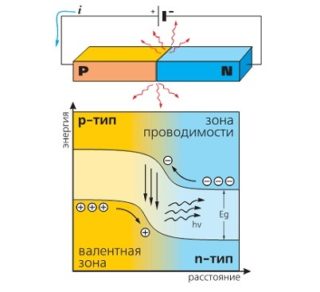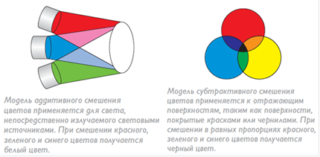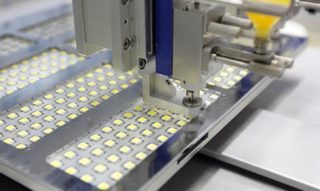To understand what an LED is, you first need to understand its generally accepted designation, presented in English as LED. Translated, this literally means "emitting small LEDs." From a technical point of view, they are semiconductor devices that convert electric current into visible light radiation. This simplest product in its appearance and device differs markedly from typical lighting devices: incandescent lamps and the like.
History of occurrence
The device and principle of operation of LED emitters is easier to understand if you familiarize yourself with the background of their occurrence. This radiating product was first born in 1962 in the form of a monochrome red diode. Despite a number of shortcomings, its manufacturing technology was recognized as promising. A decade after the demonstration of the red sample, green and yellow LEDs were presented to the general public. Due to the low return, these products were mainly used within the house as indicators on the front panels of household electronic devices.
Over time, the intensity of the glow increased several times, and in the 90s of the last century it was possible to make a sample with a luminous flux equal to 1 lumen. In 1993, the Japanese engineer S. Nakamura created the first blue diode in history, featuring a high level of luminosity. From that moment, their developers learned to get any color of the visible spectrum, including white.
Due to the remarkable characteristics of LED products, over time they have become a serious competitor to the incandescent bulbs that are familiar to many.
Since 2005, the industry has mastered the production of white LEDs with a luminous flux of up to 100 lm or more. In addition, we learned how to make lighting elements with various shades of white (“warm”, “cold” and other glows).
Device and principle of radiation formation
To understand how the LED is arranged, first of all, it is necessary to take into account a number of points regarding its design:
- the basis of the LED element is a semiconductor crystal, passing current only in one direction;
- the classic LED device assumes the presence of an insulating substrate;
- the glass case of the diode reliably protects the crystal from external influences and at the same time is a scattering element;
- on the back of the case there are two contacts to which the electrical power of the LED is supplied.
To increase the response time of the emitting device, the space between the scattering lens and the crystal itself is filled with a transparent silicone compound.
In the structure of some LEDs, a special aluminum substrate is provided, which is the base of the device and at the same time removes excess heat from it.
The principle of operation of the LED is easier to understand by examining the semiconductor junction, which professionals call the electron-hole transition. Its name is associated with the different nature of the main carriers in the boundary layer of two structures. In one semiconductor there is an excess of electrons at the contact boundary, and in the material adjacent to it there are excess holes. In the manufacturing process of the semiconductor junction, they penetrate into the adjacent layer, forming a potential barrier that prevents their reverse bias.The direct voltage on the LED during its operation depends on the width of the transition.
When a potential of a given polarity and a value generated by a direct current source is supplied to the diode, it is possible to shift the transition in the desired direction. This will lead to its opening and the appearance of a counter flow of oppositely charged particles. When they collide at the transition boundaries, quanta of light energy are emitted - photons. Depending on the repetition rate of these pulses, the radiation acquires a certain color.
What determines the color of the LED
In the manufacture of LEDs, various types of semiconductor materials are used, the choice of which determines the color shade emitted by them.
The ability to distinguish color is an innate property of the human eye, capable of capturing its gradations with great accuracy. It is inextricably linked with the wavelength of quantum radiation carried by electromagnetic waves of a certain frequency. In this case, light pulses are formed at the boundary of the semiconductor transition of the LED.
When studying the properties of various semiconductors at an early stage of their study, scientists identified materials such as gallium phosphide, as well as ternary compounds AlGaAs and GaAsP. When using them, it was possible to obtain red and yellow-green radiation. Today, in order to obtain various color combinations, more complex structural combinations of aluminum with indium and gallium (AllnGaP) or gallium indium nitride (InGaN) are used. These semiconductors are able to withstand significant currents, which allows them to receive high light output.
Color mixing technique
Modern diode tapes and LED modular clusters are able to give out different shades of the light range. Given that one transition forms monochrome radiation, a multi-chip device will be required to create a multi-color glow. This complex product works like a computer monitor, on which it is possible to get almost any shade (for this, a special RGB module is used).
Using this principle of shade formation, it was possible to obtain a white glow, widely used in LED floodlights, for example. To do this, all three source or base colors were mixed in equal proportions.
It is also possible to obtain it by combining diode structures of ultraviolet or blue radiation with a yellow phosphor type coating.
Features of manufacturing LEDs
To understand how LEDs are made, you will need to familiarize yourself with the structural features in terms of the technologies used in the manufacture. Therefore, when considering the specifics of their production, the following points are primarily taken into account:
- a specific method of forming the color of the radiation (matrix or phosphor);
- how many volts the LEDs are designed for, and what size current they can withstand;
- which technology allows you to get the best quality of the glow and is cheaper.
Making chips in a matrix circuit will cost the manufacturer more, which pays off with high quality radiation. The disadvantages of phosphors include low light output, as well as not quite pure color radiation. In addition, they have a smaller working resource and often fail.
In the manufacture of simple indicator diodes with a direct voltage of 2-4 Volts, their transition is calculated for small currents (up to 50 mA). To create high-grade lighting devices and LED bridge circuits, devices with large current indicators (up to 1 Ampere) will be required. If in one module the diodes are connected in series, the total voltage at their junctions reaches 12 or even 24 volts.In the manufacture of products, the plus of each LED is marked in a special way (a small ledge is made on the corresponding leg).
Scopes and management of luminescence
Due to the variety of modifications, LED products are widely used in various fields:
- in the manufacture of energy-saving lamps installed in a typical chandelier, for example, or in a conventional wall sconce;
- for use as illuminators in widespread miniature flashlights, as well as in larger structures such as "camping tourist lamps";
- if necessary, decorative illumination of rooms in the form of long ribbons with different colors.
Their use is due to the degree of resistance of the device to climatic factors, assessed by the product protection class. Depending on the design, they are used only indoors or are able to work in open spaces (as a design for billboards or LED rain, in particular).
You can control the luminosity level in an ordinary lamp or chandelier in various ways. For this, special electronic circuits are most often used to modulate the amplitude and other parameters of light pulses. For the convenience of working with household equipment, such a module is made in the form of a typical control panel.








